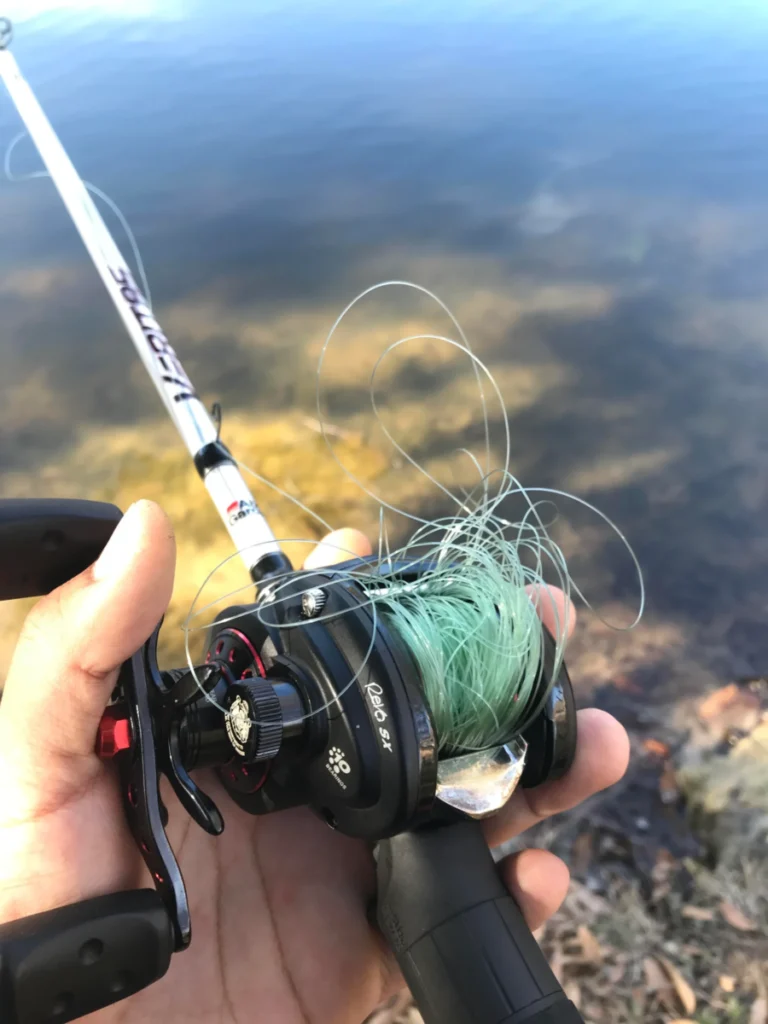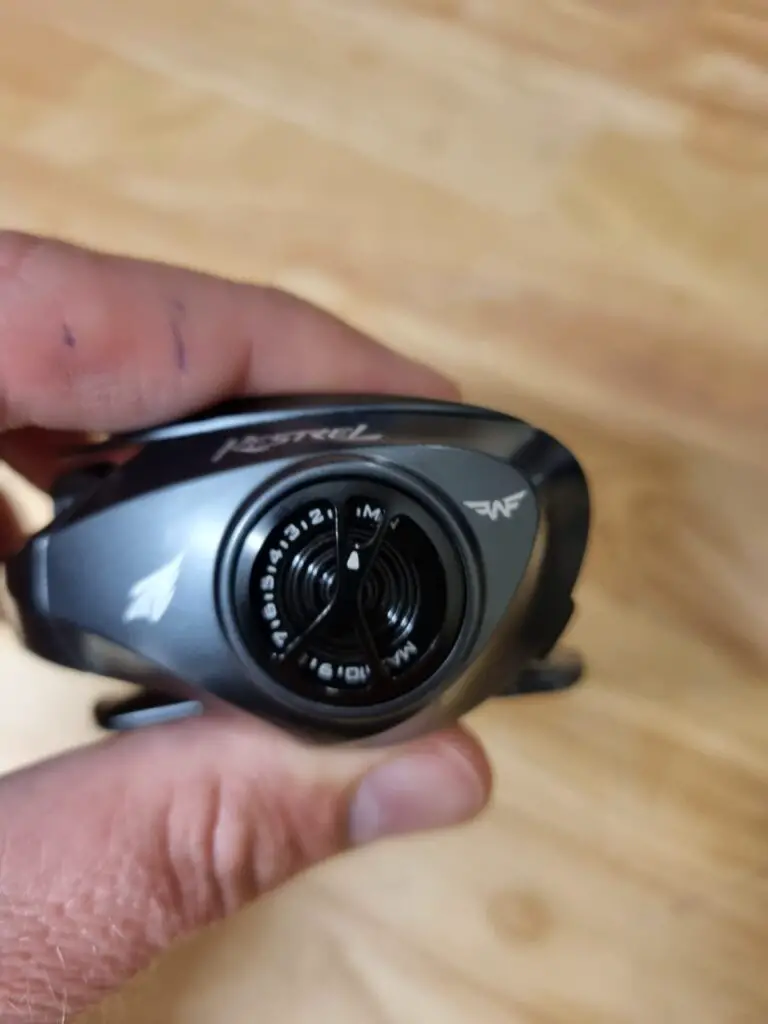You can reduce the likelihood of bird nesting in a baitcaster reel by adjusting the brake settings, increasing the spool tension, or applying more pressure with your thumb. This will reduce the rotation of the spool and prevent it from discharge fishing line after your lure has slowed down.
Baitcaster reels are different from spinning reels because they sit on top of the rod, and the spool spins with the throw instead of remaining stationary. That gives fishermen several advantages, including
- Better line capacity
- Higher sensitivity
- Farther distance when casting out, even if you’re a beginner
However, baitcaster reels also have their disadvantages. The main one is bird nesting, when the spool gets tangled and forms a knot that looks like a bird’s nest.
Bird nesting is an annoying problem with baitcasters, but you can prevent it by casting properly. The key is to avoid causing backlash when you cast the reel.
Casting baitcasters requires a bit of know-how to avoid bird nests, but you can get it with some practice.

Table of Contents
Why Do Baitcaster Reels Bird Nest?
The same qualities that make baitcaster reels a favorite among fishermen also makes them more likely to form bird nests.
The difference between baitcasting reels and spinning reels is that the central reel in a baitcaster spins with the line. That grants you more control over the line speed, making the lure go faster or slower as you wish. Many fishermen use baitcasters to try to cast out further because the spinning spool gives you more distance and line capacity.
However, the moving spool causes backlash. Backlash causes bird nests in fishing line because the spool keeps spinning while the lure and the rest of the line slow down. This does not happen for other types of reels because their spools are fixed.
What Causes Backlash?
As mentioned above, backlash is something that only happens with baitcaster reels because they have spinning spools.
Backlash is caused when the fishing line speed exceeds the speed of the spool rotating. When you release the lure, your spool starts spinning. However, at some point, the lure will slow down during your cast. If the spool does not slow down as well, it will keep releasing line that doesn’t have anywhere to go.
The real question is why will backlash occur during casting? Sometimes, the settings on your reel are off. If you don’t have the right spool pressure or trigger the brakes, the spool will keep spinning.
Other times, the cause of backlash is not in your control. For example, if there is a strong headwind, the lure will slow down while the spool will not catch up. You can still take steps to prevent backlash if you notice conditions are slowing down your cast.
How to Cast a Baitcaster Without Bird Nesting
Although bird nesting is a common problem when baitcasting, you can avoid it by reducing backlash.
Sometimes you can’t control backlash if there are environmental factors at play, but you can reduce it by:
- Braking
- Increasing spool tension
- Adding more thumb pressure
These tips reduce spool speed and prevent backlash, preventing bird nesting.
How Braking Systems Reduce Bird Nesting
All baitcasters come with brakes. Some come with two braking systems: centrifugal and magnetic. Turning on the brakes reduces spool speed at the beginning of the cast, preventing your reel from spinning out of control and allowing you to guide it from the very beginning.
To adjust your braking systems, see which type of system you have. Centrifugal brakes are covered by a panel on the side of your reel. There are several different brakes, and you activate them by turning on their sliders. There is a dial on the side for magnetic brakes where you can adjust the strength percentage.
Turning on the brakes comes with a tradeoff. Your casting distance will go down considerably. However, while you’re getting the hang of baitcasting, it’s worth losing potential distance for control.

How Spool Tension Reduces Bird Nesting
Another way to reduce backlash, and the possibility of bird nesting, is by increasing the spool tension. The spool tension finely adjusts how much line will go off your baitcaster. You should adjust your spool tension every time you switch out your bait because the weight of the lure will affect the tension. If the tension is too low, you increase the risk of your line spinning out of control.
To adjust the spool tension, tie your bait to the end of the line and see if the spool stops rotating when it hits the ground.

How Thumb Pressure Reduces Bird Nesting
Once you adjust your settings, you can control backlash further with thumb pressure. Placing your thumb lightly on the reel as you cast and stopping it manually will prevent backlash and give you control over the line.
Final Thoughts
Because the spool on baitcasters spins when you cast out, the line can get tangled into bird nests. You can prevent this by adjusting spool tension, braking, and thumb pressure.
